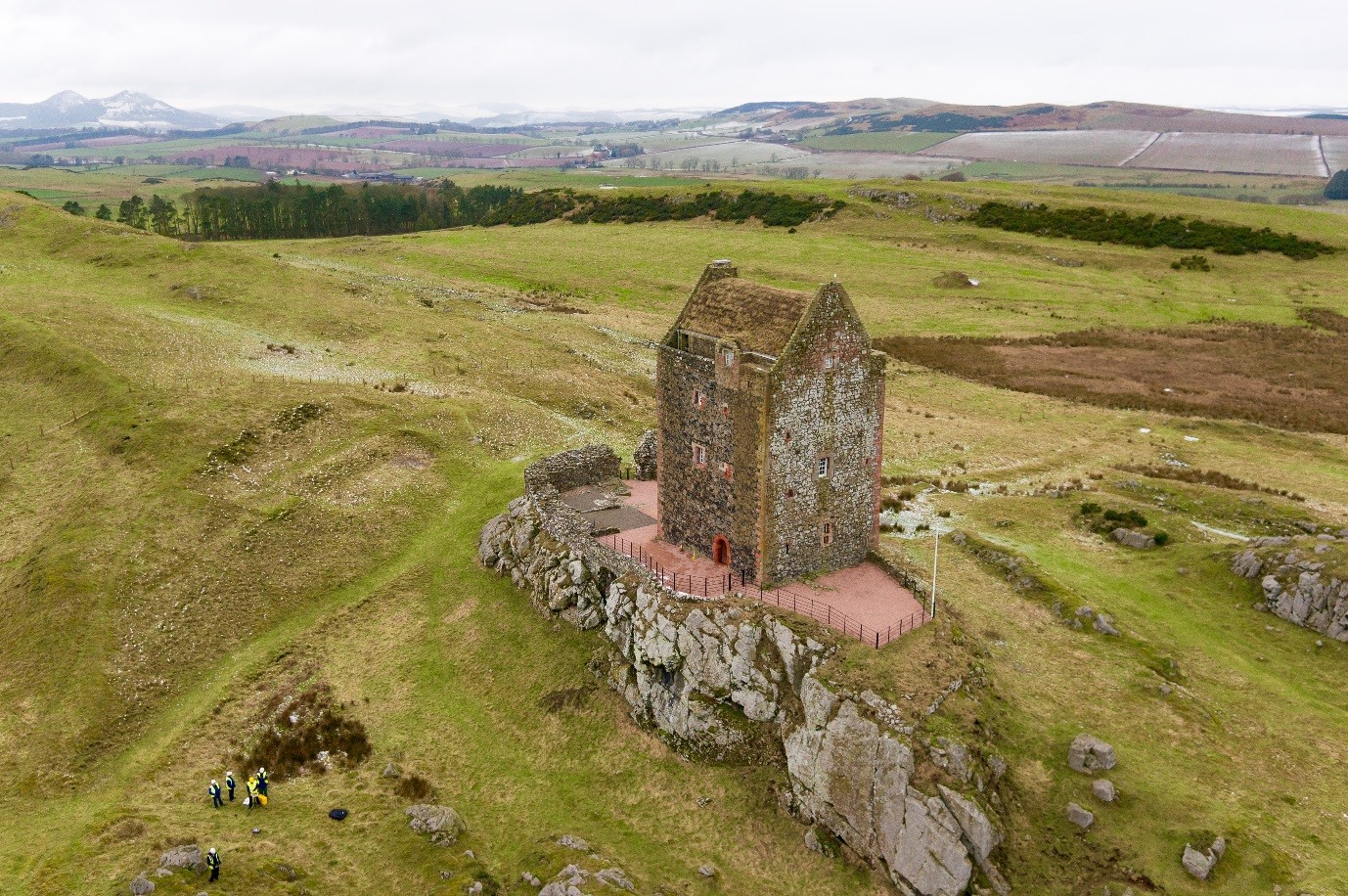With 2017 being the Year of History, Heritage and Archaeology we in the Conservation Directorate wanted to share some of the work we have been doing to look after our properties. To suit January’s theme of Song, Music and Poetry, here are some works from across our estate with a musical reference:
Smailholm Tower
Then rise those crags, that mountain tower
Which charmed my fancy’s wakening hour
Marmion, Sir Walter Scott (1808)

Smailholm Tower
Among the hills and rocky outcrops of the borders sits Smailholm Tower. This 15th-century tower house sits adjacent to Sandyknowe Farm, where Sir Walter Scott stayed as a child. His aunt and grandmother would both tell him ballads of the border country and its turbulent, romanticised past. This ‘debatable land’ saw frequent conflict and the populace lived a life of cattle raiding, marauding and constant skirmishes. These border ballads, and Smailholm itself, had a powerful effect on Scott’s imagination and he later published Minstrelsy of the Scottish Border a collection of folk songs and poems on life in the borders. Today Smailholm houses an exhibition with costumed figures and tapestries depicting scenes from Scott’s life and the border ballads he enjoyed, celebrating the link between his Minstrelsy and Smailholm.
Smailholm suffered during Storm Gertrude in 2016 and the electrics of the building were damaged. During the repairs we’re taking the opportunity to improve and upgrade the electrical installations and systems to showcase the building and its fantastic exhibitions, as well as maintain the required levels of protection to the building, its environment, staff and visitors.
Melrose Abbey
At Melrose Abbey there are several distinctive stone carvings to be found. Perhaps the best known is a 14th-century gargoyle, the ‘bagpipe playing pig’, thought to be among the oldest evidence of bagpipes in their current recognisable form in Scotland.
The pig underwent conservation work in 2014 when it was cleaned, re-pointed and digitally scanned. The work took place during more extensive works to the south aisle of the Abbey, when scaffolding gave us access to inspect and work on the pig. Moss and lichen growth was removed using gentle steam cleaning and soft brushes. Removal of such growth is important to prevent roots from damaging the surface of the stone and to ensure that water, which can harm the stone, is properly shed. Once cleaned the stone surface could be more easily inspected and some fine cracks were identified and re-pointed to prevent water from leeching into the stone. A laser scan was also conducted allowing us to preserve a digital 3D record of the gargoyle.
Glasgow Cathedral
The medieval cathedral of Glasgow, founded in the 1100s, is remarkable for having survived the Protestant Reformation in such good condition. The choir, added during the 13th century, is of relatively small size but features very refined gothic detailing which enhances the space and gives a great impression of height. Over 700 years on the choir still serves its original purpose and the voices of Glasgow Cathedral’s professional choir group can still be heard beneath the finely crafted ‘wagon’ roof.

Glasgow Cathedral
Today the choir is lit by electric lighting but the current set up is nearing the end of its natural life. We are currently in the process of installing new energy efficient LED lighting and new lighting controls to ensure adequate lighting in the choir, especially during the dark winter months. This work is due to be completed by the end of February. This will allow the lighting to be tailored and adjusted for special events or services while ensuring that the grandeur of the wonderful architecture can be fully appreciated – and that the choir can easily read their music!
Many of our properties have musical connections hidden away. Can you spot any? Why not join in on Scotland’s Year of History, Heritage and Archaeology 2017 and share any you find with us on Twitter using the hashtag #HHA2017.

